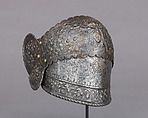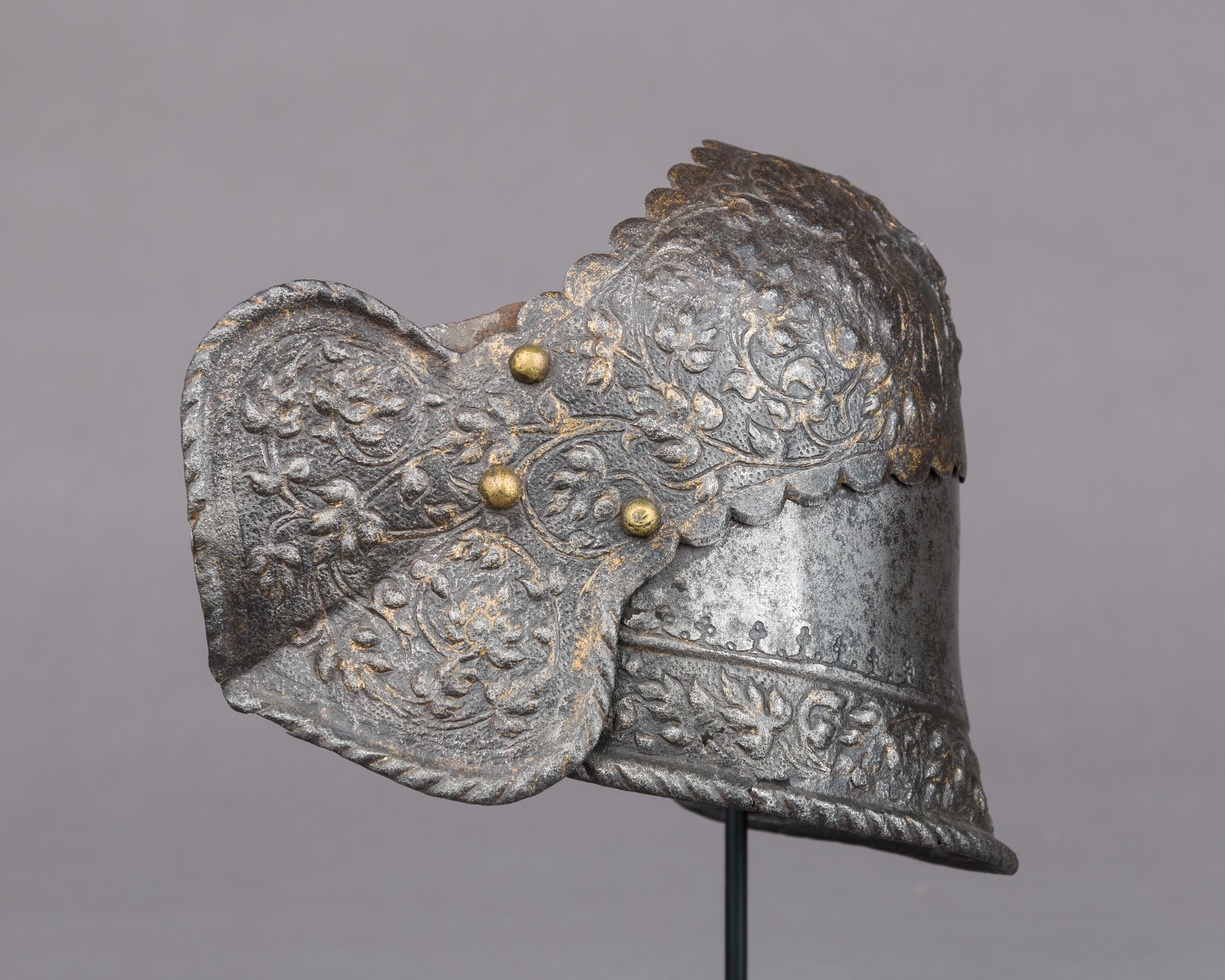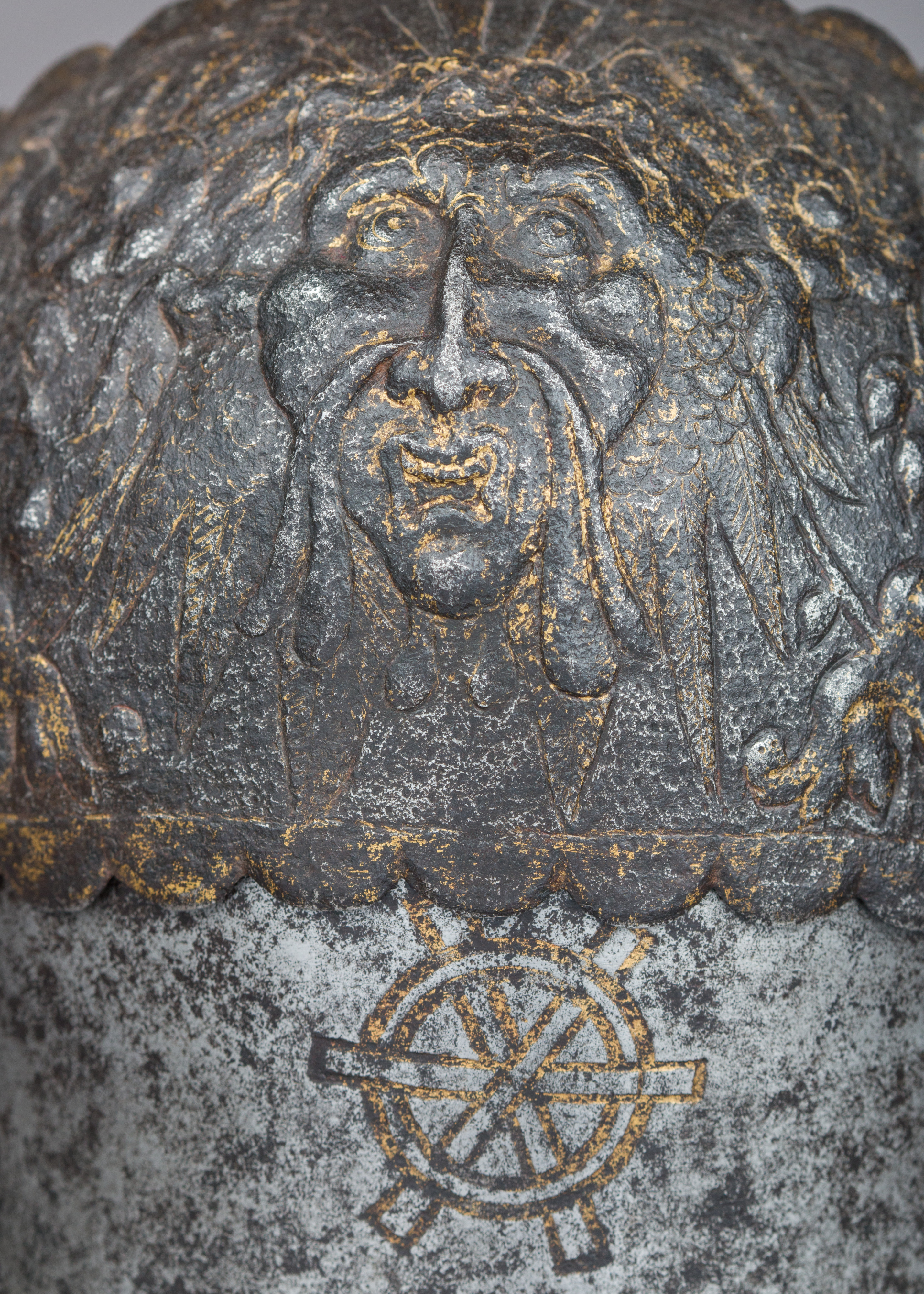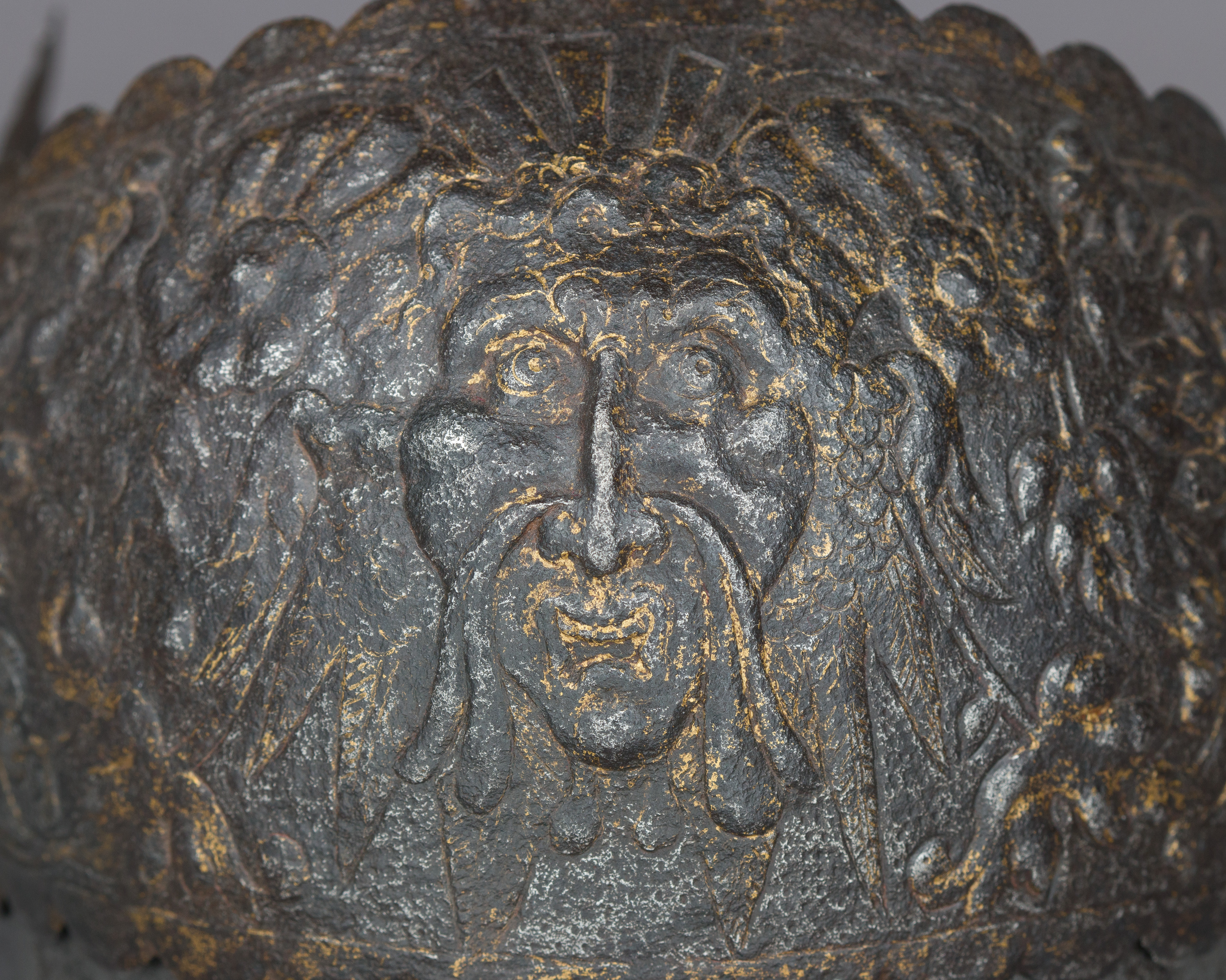Right Poleyn (Knee Defense) from an Armor of Claude Gouffier (1501–1570)
This is the only known fragment from what once must have been a magnificent French parade armor. The knee (or poleyn) consists of a main plate covering the kneecap with a heart-shaped wing on the outer side, with a portion of the lame above and a deep downward-overlapping lame below. This last has a turned and boldly roped lower edge, suggesting that it was the terminal lame of a long articulated tasset that extended from the waist to the knee, a type with which no lower leg defenses were worn. Armor so constructed followed Italian prototypes and was typically worn by the light cavalry. Its embossed and gilt decoration, consisting of dense foliate scrollwork and a grotesque mask with ram's horns (fig. 2) at the front of the main plate, recalls the ornamental motifs and workmanship of the Museum's armor of Henry II of France (39.121), which was probably made in a Parisian atelier about 1555. Etched on the plate below the knee is the gilt monogram formed of the Greek letters chi (Χ) and phi (Φ) that identifies it as having belonged to the distinguished courtier, soldier, and patron of the arts Claude Gouffier (1510–1570), grand écuyer (master of the horse) of France. The same monogram, which incorporates the initials of Claude and his second wife, Françoise de Brosse, is found everywhere in the decoration of Gouffier's château of Oiron (Deux-Sèvres) and on the numerous bookbindings and manuscript illuminations commissioned by this ardent bibliophile. It recurs on another piece of armor, a richly etched and gilt French close helmet of similar date, which by happy coincidence is also in the Metropolitan's collection (14.25-596).
Due to rights restrictions, this image cannot be enlarged, viewed at full screen, or downloaded.
This artwork is meant to be viewed from right to left. Scroll left to view more.





